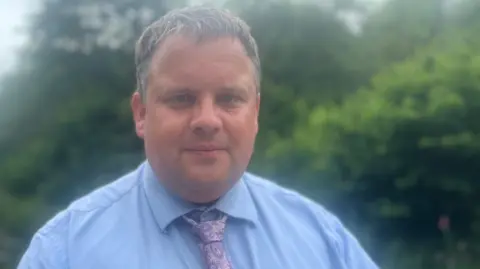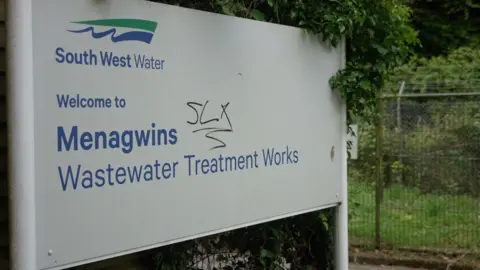Pollution from treatment works killed fish
 Three Bay's Wildlife Group
Three Bay's Wildlife GroupA water company has confirmed one of its treatment works was the source of pollution that killed thousands of fish in a Cornish river.
Pennon Group, which owns South West Water, said the pollution in St Austell River "occurred as a result of a delivery by a third party to our treatment works" in the Pentewan Valley.
The Environment Agency said potentially thousands of fish including trout, eels and lamprey were killed by liquid lime in the river, which is also known as the White River, on 19 June.
Cornwall Council member for the area James Mustoe said it was "very concerning" as the county had seen such events in the past "like in Camelford", which saw a poisoning incident in 1988.

Mustoe said it had been "really devastating" to see the dead fish along the river and he wanted assurances that such an incident would not happen again.
He said he had been contacted by dog owners whose pets had become unwell after being in the river on Thursday, together with people who had suffered symptoms after swimming in it.
"We need confidence that our waters are safe," he said.
Waste water director for South West Water David Swiggs told the BBC an investigation was under way.
He said: "We had a third party delivery on site at the time and we are now cooperating with the Environment Agency to make sure that investigation is fully complete and to understand what's actually happened here.
"It was a short-lived incident and the river had recovered quite quickly, so there's no ongoing concerns and it had no impact on bathing water quality at the time."

The Environment Agency had classified the incident at Menagwins Wastewater Treatment Works as "high category".
The agency said on Tuesday its officers had taken samples of dead fish from the scene.
"This will be used as evidence for our regulatory action to bring those who pollute the environment to account," it said.
Liquid lime, or calcium hydroxide, is commonly used to treat water as it can alter the acidity levels and and remove impurities.
Mr Swiggs said: "Lime is used in waste water treatment for sludge treatment and also for the pH correction of the works' processes.
"Once we fully understand exactly what happened, we'll make sure there's a robust plan in place to make sure things like this cannot happen again."
People 'devastated'
Nick Taylor, from the Three Bay's Wildlife Group, a citizen science team which has taken monthly water samples from the area for the last six years, visited the site on Friday.
He told the BBC he estimated between 10,000-11,000 fish had died, which were mainly eels with some trout and a stickleback.
He said he had taken a sample and found "probably 80% of the invertebrates we'd normally see had been wiped out".
Noah Law, MP for St Austell and Newquay, said: "People are just devastated first and foremost at the loss of wildlife".
The Camelford water poisoning saw 20 tonnes of aluminium sulphate tipped into the wrong tank at a treatment works on 6 July 1988, contaminating water to 20,000 homes.
Residents reported a range of health problems, including headaches and stomach cramps, for decades afterwards.
Follow BBC Cornwall on X, Facebook and Instagram. Send your story ideas to [email protected].
